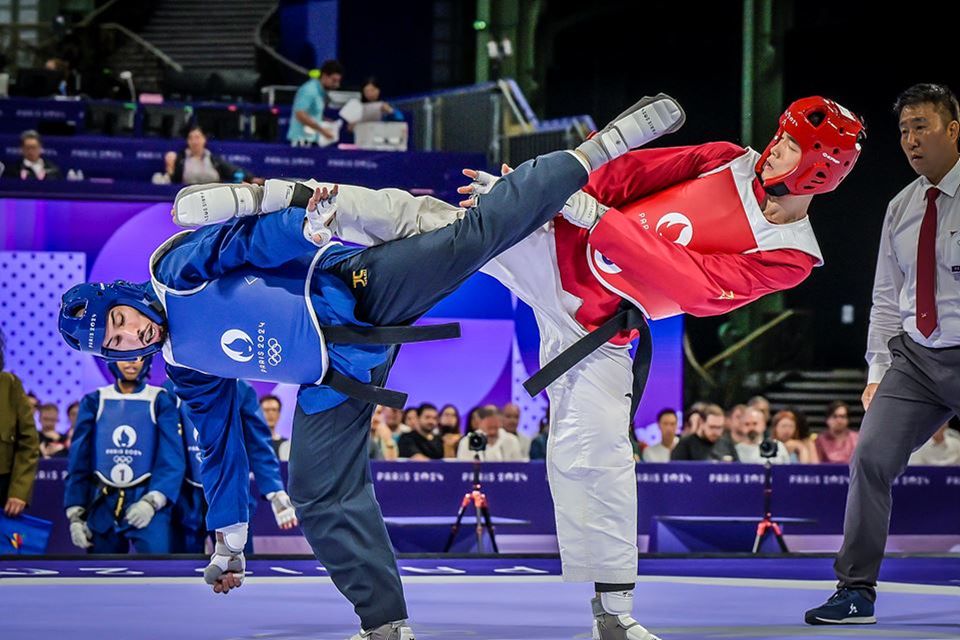
SEOUL, Korea (Jun. 4, 2025) - As part of our commitment to the Sports for Nature Framework and the UN Sports for Climate Action Framework, we are working to embed sustainability across all areas of our operations – including how we work with the companies that supply products and services for our sport.
In 2025, we began a process to strengthen our sustainable procurement practices by engaging suppliers around a shared checklist focused on key environmental topics. The aim was to open a constructive dialogue about where sustainability is already being implemented and where we could work together to improve over time.
We’re pleased to share three early examples of promising practice from suppliers actively contributing to this effort.
KPNP: Advancing Circularity and Energy Efficiency
KPNP is taking a number of forward-looking steps to reduce its environmental impact, including:
- Product Return and Reuse: A program is in place to collect used products for recycling and reuse, with ongoing work to improve collection logistics.
- Eco-Friendly and Modular Design: Products are being developed with more durable, reusable, and recyclable components, and a modular approach that supports repair and longevity.
- Use of Renewable Energy: Solar energy is integrated into facilities, supporting a transition to cleaner operations.
- Sustainable Packaging: Packaging includes recycled cardboard and reusable plastic, with minimal use of individual product wrapping.
These actions reflect an organization actively embedding environmental considerations across its design and delivery, while continuing to seek practical improvements.
MJ Sports: Laying the Groundwork Through Compliance and Innovation
MJ Sports is making steady progress by combining compliance with international standards and long-term sustainability thinking:
- Safety and Material Standards: Production materials meet international safety standards, including AZO-free dyes and EU chemical compliance.
- Reuse Initiatives: Products returned in good condition are redistributed for use in developing countries, helping to extend product life.
- R&D in Sustainable Materials: The supplier is investing in the development of alternative, more sustainable materials, recognizing the complexity and time investment required.
- Responsible Packaging: A basic but functional packaging approach is in place, using poly bags and cardboard, with scope for optimization.
MJ Sports manages production through OEM (Original Equipment Manufacturer) factories, meaning the manufacturing is outsourced to facilities not directly owned by the company. While this model is common across the industry, it can present challenges for oversight. Nevertheless, MJ Sports maintains regular site visits and is proactively identifying areas for future improvement.
Waychamp: Prioritising Sustainable Transport and Materials
Waychamp is implementing several practical initiatives to reduce its environmental impact, with a particular focus on transportation and packaging:
- Sustainable Business Travel: Employees are required to use high-speed rail as the primary mode of travel. Air travel is permitted only when absolutely necessary, and must be booked as a direct flight.
- Transition to Electric Vehicles: The company is actively working to replace diesel vehicles with electric trucks.
- Packaging Innovation: Traditional wooden shipping boxes are being replaced with recyclable honeycomb cardboard.
These measures demonstrate a strong focus on reducing emissions from transport and logistics while improving the recyclability of materials used in operations.
What We’re Learning
These examples highlight how suppliers are approaching sustainability in different ways – whether through product innovation, renewable energy, improved packaging, or upstream partnerships. Importantly, all three suppliers have shown openness, initiative, and a commitment to ongoing progress.
Their input is helping to shape the next phase of our procurement work, which includes:
- Developing a new sustainable procurement policy and supplier charter;
- Integrating sustainability into competition operational requirements and event bidding processes; and
- Providing clearer expectations and guidance to both suppliers and internal teams involved in procurement.
Looking Ahead
Sustainable procurement is a long-term journey. These early examples show the value of collaboration and transparency in driving change – and the importance of recognizing and building on the good practices already in place.
We thank all suppliers participating in this process and look forward to continuing to strengthen our approach together.



Photo: Courtesy of Waychamp